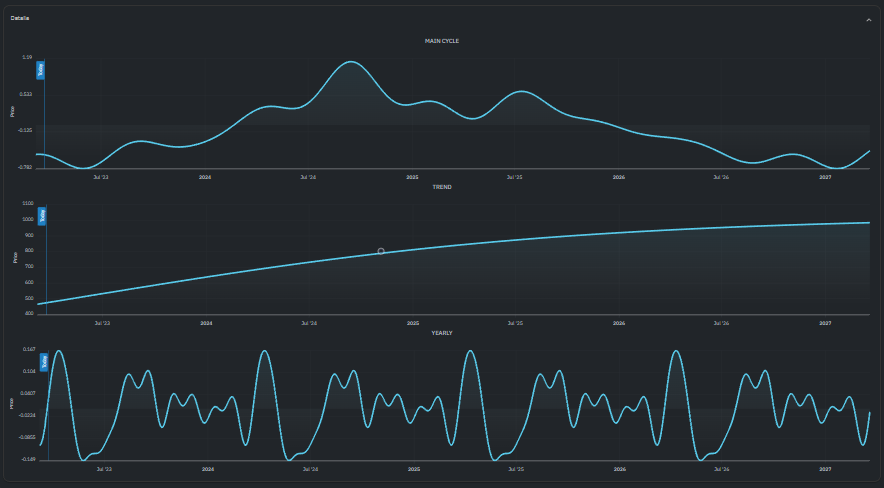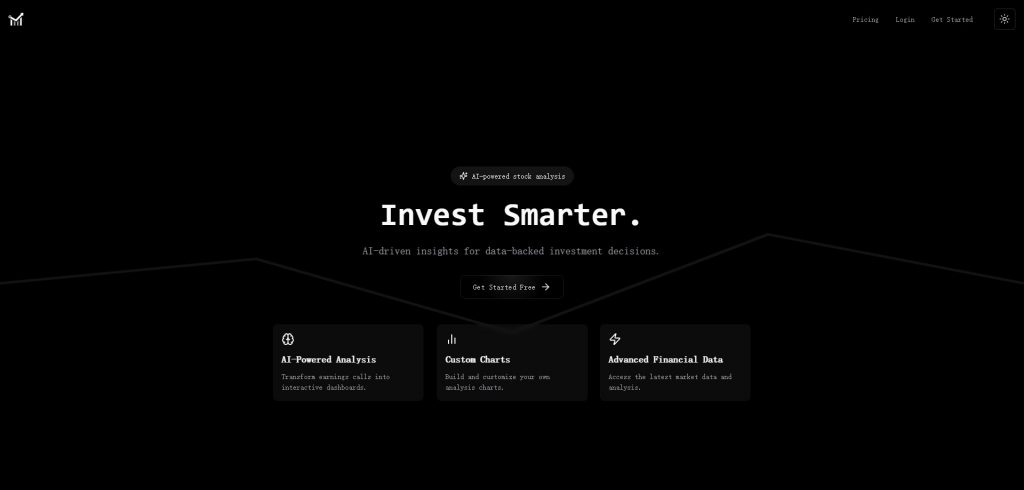20 Pro Tips For Choosing Ai Options Trading Websites
20 Pro Tips For Choosing Ai Options Trading Websites
Blog Article
Top 10 Tips For Assessing The User Interface And Experience Of Ai Platform For Predicting And Analyzing Stocks
The User Interface (UI), and User Experiences (UX) within AI trading platforms that forecast or analyze stock prices play a crucial part in ensuring efficiency and satisfaction. An ineffective user interface can hinder decisions even if the AI models that underlie it are robust. Here are the 10 best ways to evaluate the UX/UI.
1. Assess the sensitivity of your intuition and ease of Use
Navigation: Ensure that the platform is simple to use, using menus and buttons that are easy to understand as well as workflows.
Learning curve: Assess how quickly and efficiently a novice user is able to understand and utilize your platform without extensive training.
Look for similar design styles (e.g. color schemes and buttons) across all platforms.
2. Make sure you check for customizability.
Dashboard customization: Find out whether dashboards are customizable to display information, charts and metrics relevant to the user.
Layout flexibility - Make sure that your platform is able to allow users change the size or layout of widgets as well as charts.
Themes: Determine if your platform has dark/light mode or other preferences.
3. Visualize Data
Quality of the chart: Ensure that the site offers interactive charts of high quality (e.g. candlestick charts, lines charts, etc.)) which include zoom and pan functions.
Visual clarity: Check that the data is clearly displayed and is labeled appropriately as well as legends and tooltips.
Real-time Updates: Check to see whether your charts reflect the most current market information.
4. Test the responsiveness and speed
Loading times: Ensure the platform is loaded quickly, even when handling large datasets or complicated calculations.
Performance in real-time: Make sure your platform is able to handle data feeds immediately without lags or delays.
Cross-device compatibility : Find out if your device is compatible with the platform (desktops, mobiles, tablets).
5. Assess Accessibility
Mobile app availability: Find out whether the platform provides an app on mobile that includes all the features needed for trading on the go.
Keyboard shortcuts: Ensure that the platform supports keyboard shortcuts for power users.
Accessibility features: Determine if the platform complies with accessibility guidelines (e.g., screen reader support or high-contrast mode).
6. You can search and filter your results.
Search performance: Ensure that the platform permits users to perform a quick search of stocks, indices or any other assets.
Advanced filters: Find out if there are any filters that could be applied to your results.
Saved searches - Make sure that the application allows you to save frequently used filters or searches.
7. Be sure to check for alerts and notifications.
Customizable notifications: Users can create specific alerts that can be specifically tailored to the conditions of their needs.
Notifications delivery: Determine whether notifications can be sent through different channels (e.g. SMS, email and app notifications).
Timeliness: Make sure that alerts are activated quickly and accurately.
8. Evaluation of Integration with Other Software
Broker integration: The platform should be connected to your brokerage account, so that transactions can be completed effortlessly.
API access: Check whether the platform permits advanced users to create custom workflows and tools.
Third-party platforms: Examine to find out if your platform has the ability to connect to other apps (such as Excel Google Sheets, or trading bots).
9. Check out the Help and Support Features as well as the Support Features.
Tutorials for onboarding - Check to see if there are tutorials and walkthroughs available for users who are new to the platform.
Help center: Ensure the platform has a comprehensive support center or knowledge base.
Customer support: See whether you are able to get a quick response from the platform (e.g. through live chat, by email, or on the phone).
10. Test The Overall Satisfaction of Users
User feedback Reviews and testimonials from research to gauge the level of satisfaction overall with UI/UX.
Trial period: Use the demo or trial version for free to experience the platform firsthand and assess its usability.
How does the platform deal with edge cases and mistakes?
Bonus Tips
Aesthetics is crucial, a pleasing design can help improve user experience.
Performance under stress Test the platform under extreme market volatility to ensure that it is stable and agile.
Check whether the platform has an online community for users where they can exchange feedback and tips.
Use these guidelines to evaluate the UI/UX on AI platform for analyzing and predicting stocks. This will ensure that they are user-friendly and efficient. They must also be aligned with trading needs. A great UI/UX can significantly increase your capacity to make well-informed choices and effectively execute trades. Check out the top rated free ai trading bot info for website tips including copyright financial advisor, ai hedge fund outperforms market, ai trading bot, getstocks ai, stock analysis tool, ai trading platform, trade ai, ai stock trading bot free, ai stock trading, ai options trading and more.
Top 10 Tips For Evaluating The Risk Management Of Ai Stock Forecasting/Analyzing Trading Platforms
Risk management plays a crucial function in any AI-powered platform for trading stocks. It safeguards your investment by limiting the risk of losses and enables you to maximize profits. Platforms with robust risk management capabilities can assist you in navigating volatile stock markets and make decisions based on information. Here are 10 top strategies for evaluating the risk management capabilities of these platforms: capabilities:
1. Evaluate Stop-Loss and Take-Profit Features
Customizable Levels: Be sure the platform allows you to define your own stop-loss levels as well as targets for take-profits in strategies or trades.
Make sure that your platform supports trailing stops which automatically adjusts in the event that the market moves toward you.
Find out if your platform permits you to put stop-loss order that ensure the close of your trade at the amount stipulated, even on unstable markets.
2. Assess Position Sizing Tools
Fixed amount: Check that the platform you are using allows you to adjust the size of your position in accordance with a set amount.
Percentage of Portfolio: Find out whether it is feasible to define the size of your position as a percentage of your portfolio total in order to manage risks in a proportional way.
Risk-reward: Make sure your platform lets you set risk-reward for each trade or strategy.
3. Look for Diversification Support
Multi-asset trade: Make sure that the platform allows trading across different asset classes (e.g., ETFs, stocks, options and forex) to diversify your portfolio.
Sector allocation: Determine if the platform offers tools to monitor and manage exposure to sectors.
Diversification of geographical risk: Find out if the platform for trading has international markets available in order to spread risk geographically.
4. Evaluation of Leverage and Margin Controls
Margin requirements. Make sure you know the requirements for margin prior to trading.
Find out if your platform lets you to limit leverage to control the risk of exposure.
Margin calls: Check if the platform sends out timely margin call notifications to avoid account liquidation.
5. Assessment Risk Analytics and reporting
Risk metrics: Ensure that the platform has important risk indicators to your portfolio (e.g. Value at Risk (VaR) Sharpe ratio and drawdown).
Scenario analysis: Ensure that the platform enables you to simulate different scenarios of the market to determine the risks.
Performance reports: Make sure the platform provides you with detailed information on the performance of your investments, including returns that are risk-adjusted.
6. Check for Real-Time Risk Monitoring
Monitoring your portfolio: Make sure your platform provides real-time monitoring of your portfolio's risk exposure.
Alerts and notifications: Check the ability of the platform to send real-time warnings of risksy events (e.g. breached margins, Stop loss triggers).
Risk dashboards - Examine to see if your system has customized risk dashboards. This will provide you with a better overview of the risks you're facing.
7. How to evaluate Stress Testing & Backtesting
Stress testing: Ensure that the platform lets you stress test your strategies or portfolio under extreme market conditions.
Backtesting - Find out the platform you use allows you to test strategies back using old information. This is a fantastic method to gauge the risk and evaluate the performance.
Monte Carlo simulators: Verify that the platform is using Monte Carlo to simulate a number of possible outcomes to allow you to evaluate risks.
8. Risk Management Regulations - Assess the Compliance
Regulatory compliance: Verify that the platform adheres to the relevant regulations for risk management (e.g. MiFID II, Reg T, in the U.S.).
Best execution : Check to determine if your platform is following best execution procedures. This ensures that trades will be executed at the most efficient price while minimizing the chance of slippage.
Transparency Examine the transparency of the platform and the clarity of risk disclosure.
9. Verify for User Controlled Risk Parameters
Custom risk rules - Make sure the platform permits the user to set up your own risk management policies.
Automated risk controls: Check to see whether your system can apply risk management rules upon the parameters you've set.
Manual overrides - Examine whether your platform permits you to manually override automated risk controls.
User feedback from reviewers and case research
User reviews: Examine feedback from users and evaluate the platform’s efficiency in managing risk.
Testimonials and case studies: These will highlight the platform’s risk management capabilities.
Community forums: Check whether a platform is home to a community of users who are willing to share their strategies and strategies to manage risks.
Bonus Tips
Free Trial: Try out the features of the platform for risk management in real scenarios.
Support for customers: Make sure you have a reliable support system for risk management-related concerns or questions.
Educational resources: Find out if your platform offers tutorials or educational materials that provide information on risk management techniques.
These guidelines will allow you to determine the risk management capabilities of AI stock-predicting/analyzing trading platforms. So you'll be able pick a platform that safeguards your capital and limits potential losses. It is crucial to have robust risk-management tools to be able to navigate market volatility. Check out the most popular inciteai.com AI stock app for more examples including ai trading, ai stock trading, ai trading software, free ai tool for stock market india, ai trading, ai stock price prediction, stock analysis app, trading ai, free ai trading bot, ai stock market and more.